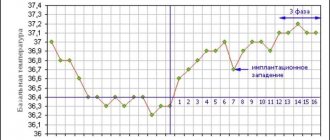Why is mercury poisoning dangerous? The greatest danger is posed by toxic mercury vapor. Mercury poisoning occurs when they are inhaled - the higher the concentration, the more serious the consequences. With minor damage, headache, nausea, vomiting, dizziness and weakness are possible, with more serious or chronic forms - damage to internal organs, even death.
Expert help
+7(812)309-13-43
Why is mercury dangerous?
A transition metal from the zinc subgroup, belonging to chemical elements of hazard class I - mercury.
It is not the silvery-white liquid that poses a danger to human health, but its vapor. Toxic fumes begin to be released at a temperature of 18C. In an apartment, the temperature is usually higher, so the vapors spread much faster.
The fumes enter the body through the respiratory tract, then the toxic substance affects the central nervous system. The liver, kidneys and brain are most affected.
The metal has the property of accumulating in the human body; about 80% of the toxic substance is not excreted.
Not only mercury vapors pose a threat to humans, but also metal compounds. One of the most toxic is methylmercury. The largest poisoning occurred in Japan (1956). Chisso systematically dumped waste containing high levels of mercury into a bay near the city of Minamata. The fish that live in these waters have caused poisoning to a large number of people.
The fact that severe intoxication claimed the lives of 35% of the total number of victims shows how dangerous mercury is. Methylmercury poisoning was later given the name Minamata disease.
What to do if the thermometer is cracked under the armpit
If mercury gets on your skin, for example, a thermometer breaks right under your arm, do not panic. Since it is not mercury itself that is dangerous, but its vapor, the harm from it will be the same as if a thermometer were broken on the floor. In rare cases, allergic reactions may occur on the skin, which can be treated with standard medications.
To avoid the risk of allergies, immediately after contact with the skin, wash off the mercury with a solution of potassium permanganate. Moisten a cotton sponge with the same solution and hold it where the substance comes into contact with the skin.
Monitor your skin reaction. If no redness or rash appears within 24 hours, then the allergy has not appeared.
A broken mercury thermometer: action plan
Humanity has been using mercury thermometers for the past 300 years. Mercury thermometers are highly accurate compared to analogues and are easy to hygienically handle. But there is an unpleasant property - they can break at the most inopportune moment.
If you see a broken thermometer glass and mercury balls, then the first and most difficult thing to do is not to panic . The safety of your home will depend on your quick and confident actions.
Demercurization - mercury collection activities
- Ventilation and reduction of room temperature. You should open the window for ventilation. Ideal if the temperature outside is below room temperature. The higher the room temperature, the more actively mercury evaporates. A person who demercurizes will inhale less mercury vapor.
- After collecting the mercury, it is advisable to leave the windows open for several days. During this time, the vapor concentration will decrease.
- During the collection of mercury during the heating season, you should shut off the radiators and turn off the heated floor.
- Before demercurization, it is necessary to take care of protective equipment. Mercury should be collected using strong rubber gloves. The respiratory organs must be protected with a respirator with a filter. Shoe covers should be worn on your feet over your shoes.
- At the site of a mercury spill, small drops remain that are not visible to the eye. They are disinfected with aqueous solutions of potassium permanganate, soda, and chlorine-containing substances.
How are tomatoes harmful to the body?
Prohibited actions
- You cannot collect mercury with a vacuum cleaner, broom, or mop. These items may retain mercury particles and release the metal into the environment.
- It is forbidden to collect mercury with a rag, as the metal will spread in a thin layer and quickly evaporate. American scientists conducted an experiment on mercury contamination of a room of 20 cubic meters. The mercury ball was only 4 mm. If the metal remained in this form, then after an hour the concentration of mercury vapor was 0.29 micrograms per cubic meter. The value does not exceed international air pollution standards. Afterwards, the scientists simulated cleaning with a wet cloth and smeared the ball over the surface. After a short time, the vapor concentration increased to 100 micrograms per cubic meter, which is 10 times higher than the maximum permissible level for industrial premises. Planned demercurization after incorrect actions turned out to be ineffective. The concentration of mercury vapor seemed to be a hundred times higher than atmospheric.
- It is prohibited to throw mercury and items contaminated with it into sewers, household garbage, or septic tanks. You cannot wash clothes, soft toys, slippers, or carpets either in a washing machine or by hand. The substance is very difficult to remove from things with lint. There may be tiny drops of metal left in the washing machine, which will settle on all washed items.
Additional actions
- After the procedure, all protective equipment must be folded and disposed of. If mercury comes into contact with clothing, it must also be disposed of. It is necessary to wash your hands thoroughly with soap, rinse your mouth and brush your teeth. To reduce the harmful effects on the body, you need to drink 2-3 tablets of activated carbon.
- Help a pet. If mercury gets on your pet, it should be washed with a chlorine-containing disinfectant solution and then with running water. When a ball of mercury is entangled in thick wool, it should be cut off with scissors.
- Disposal of mercury and contaminated items. All items should be sent to the nearest sanitary and epidemiological station: broken thermometer,
- collected mercury, in an airtight container under a strong solution of potassium permanganate,
- all items that were involved in cleaning, including protective equipment,
- clothes and things that have been exposed to mercury.
You should contact the sanitary service if you have any doubts about the quality of mercury collection. If you suspect that liquid metal could get into the cracks, behind the baseboard, or under the floor covering. Sanitators can measure vapor concentrations and treat the room.
Puffiness under the eyes: causes and treatment at home
There is a risk of infection if the mercury is not completely removed.
If metal particles remain in hard-to-reach places, there is still a risk of infection. The evaporation rate slows down after some time as an oxide film forms on top. This condition is met only if there is no mechanical impact. If balls of metal get under the parquet floor that you walk on every day, the mercury will continue to evaporate. A ball of mercury with a diameter of just three millimeters can release harmful fumes into the atmosphere for three years.
Prevention measures
You can reduce the risk of the thermometer breaking if you follow some recommendations:
- The thermometer should be kept out of the reach of children,
- for storage you should use a special case,
- shaking the thermometer should be done over a soft, flat surface, for example, over a bed,
- hands must be dry during all manipulations with the thermometer,
- purchase a safe electronic or non-contact thermometer; for children there are models in the form of a pacifier, the price is slightly higher, but the safety of human health is much more expensive,
- public prevention measures have long been used in European countries; since 2007, the use of mercury thermometers has been prohibited; Russia has signed the convention since 2021.
How to remove mercury yourself?
Anyone who has ever broken a thermometer knows that when mercury falls, it scatters into small shiny drops. Before cleaning, it is better to put on shoe covers and gloves, unnecessary clothes and try not to step on the place where the mercury spilled, so as not to spread dangerous balls around the apartment.
Various websites write that if the demercurization service is not called on time, the person may die. But that's not true. They are deliberately trying to intimidate you so that you call the service and pay. After all, you are afraid of mercury and have no idea what to do with it.
First, I’ll tell you what not to do. Do not brush off the mercury with a broom, otherwise you will scatter it into small pieces. You cannot remove the substance with a vacuum cleaner: hot air from it will only accelerate the evaporation of mercury, and the vacuum cleaner itself will have to be thrown away after such cleaning. A robot vacuum cleaner will not work either, as it will simply scatter drops of mercury around the room. Also, under no circumstances should you throw the collected substance into the garbage chute, flush it down the toilet or sink, or bury it in the ground in the yard - this is dangerous to the health of others.
To collect mercury you need to take a jar with a lid. A test container or a jam container will do. You need to pour water into it - it will protect you from mercury vapor. To collect drops from the floor, you can use a regular piece of paper or even two.
By the way, mercury cannot enter the body through the skin. If you put your finger in a jar of mercury, it will not fall off and there will be no burn (I checked)! Surprisingly, but true: gold is mined using mercury with bare hands. If you are collecting thermometer residue without gloves, be careful not to allow small droplets to stick to your palms.
When starting cleaning, you first need to collect large balls of mercury. This is easy to do with paper and then put in a jar of water. Once the mercury is under water, you will no longer be afraid of its fumes... but only for seven days. The fact is that mercury still “evaporates under water,” and after about seven days the pressure of mercury vapor above water will be the same as above a drop of mercury lying not under water. So don't keep the jar at home for more than a week!
Large drops of mercury can also be collected with a syringe without a needle or a syringe. Small drops can be easily removed with tape, then placed in a bag, tied tightly and recycled along with the jar. Find out where to take the collected mercury in your area by calling 112.
Finally, make sure that you have collected all the mercury balls. Use your phone's flashlight or other bright light source. Mercury glitters, and if you see small shiny drops of mercury, then you are not done yet. We'll have to continue cleaning.
The problem is that mercury can flow into small cracks in the joints of the laminate or under the baseboard. If you have a floor with a lot of gaps, the bad news is that the floor will have to be opened up.
After you have collected all the mercury, you need to thoroughly rinse the floors. I recommend doing this using a soap-soda solution in two stages.
First stage. In a plastic (not metal!) bucket, prepare a solution of chlorine-containing bleach “Belizna” at the rate of 1 liter of bleach per 8 liters of water (2 percent solution). Rinse the contaminated surface with the resulting solution using a sponge, brush or cloth.
Second phase. Prepare a soap-soda solution at the rate of 40 g of grated soap and 50 g of soda per 1 liter of water and treat the stained area with it. Over the next few days, this procedure must be repeated regularly. Do not forget to regularly carry out wet cleaning and ventilate the room.
You can simply wipe the floors with soapy water if you do not have the time and energy for the disinfection described above. Pay special attention to the cracks to wash out any small drops of mercury that may be there. Over the next few days, the procedure must be repeated regularly. Do not forget to also carry out wet cleaning and ventilate the room. As a result, you will have a perfectly clean floor, without mercury and dirt.
Possibility of serious mercury poisoning from a thermometer
A threat appears only if the integrity of the thermometer is compromised. As the mercury flows out, it breaks up into many small balls. They must be collected fairly quickly to prevent the spread of vapors. The balls scatter in different directions, rolling into corners, crevices, and getting between the fibers of the carpets. The cleaning process is made difficult not only by its size, but also by the lack of smell.
It is unlikely to get a fatal degree of intoxication from one broken thermometer. The metal content in the thermometer is not enough for acute poisoning. It occurs when inhaling mercury vapor for several hours, while per 1 cubic meter. m must contain at least 10 mcg of toxic substance.
If the cleaning is not carried out thoroughly and the room has not undergone special treatment, there remains a high risk of chronic mercury vapor poisoning . The accumulation of toxic substances in the body proceeds slowly. At the first stage there are practically asymptomatic. Inhaling vapors for several hours can cause a person to feel weak. Later, nausea appears, coordination of movements is impaired and noticeable trembling in the knees appears.
The most dangerous method of poisoning is ingestion of mercury pellets. Most often, children are exposed to this type of intoxication.
By taking the precautions recommended by experts and removing all mercury particles that have rolled out of the thermometer, you can avoid poisoning.
What to do if a child breaks a thermometer
The main thing is not to scold the child, otherwise next time he will simply keep silent about what happened.
Step by step guide:
- Inspect your child's hair, body, and clothing for mercury particles. If pellets are found, carefully collect them in a jar with demercurization solution.
- Induce vomiting in your child.
- Remove clothing and bathe your child thoroughly.
- Give your baby an activated charcoal tablet and drink plenty of water.
- Take your child out into the fresh air.
- Collect the mercury, treat the room and close it from visitors.
Give your child more fluids throughout the week.
Degrees of poisoning and their symptoms
The first signs of mercury vapor intoxication begin to appear some time after mercury vapor enters the body. Depending on the concentration level and duration of inhalation of toxic fumes, acute and chronic degrees of poisoning are distinguished. Each of them has its own signs and symptoms.
Acute poisoning
Occurs after a large concentration of toxic mercury vapor enters the body. After a few hours, the person begins to feel:
- severe headache that does not disappear for a long period of time after taking painkillers;
- weakness and dizziness;
- drowsiness;
- lethargy and deterioration of general condition;
- increased temperature, sometimes up to 39-40 degrees;
- abdominal pain;
- excessive salivation and bad taste in the mouth.
If you feel the first signs of illness, you should consult a doctor or call an ambulance. Failure to provide medical care in a timely manner leads to pulmonary edema, internal bleeding, and loss of consciousness. In rare cases, coma and death occur. It is impossible to get acute mercury poisoning at home; usually this degree of intoxication occurs as a result of industrial accidents.
5 Extreme Ways Countries Have Tried to Control Births
Chronic poisoning
Mercurialism is much more common. The smallest particles from a broken thermometer in an apartment, remaining in a crack or rolling under the baseboard, emit toxic fumes. The process can last 2-3 years. Their concentration is low, so a person can inhale mercury for a long period and not experience illness. Dangerous vapors accumulate in the body, settle in the liver and kidneys and gradually harm other internal organs.
Characteristic signs of chronic poisoning include:
- excessive fatigue and weakness in the body;
- loss of consciousness;
- increased drowsiness;
- frequent dizziness and pressure surges.
The symptoms of mercury poisoning are somewhat similar to other diseases, so many people are not even aware of poisoning.
What you need to know about mercury?
Mercury can enter the human body in two ways: through the mouth and in the form of toxic vapors. Therefore, in order to avoid poisoning, it is enough to simply not eat mercury and not actively breathe over it. The first thing to do if the thermometer breaks is to open the window. But you can’t create a draft, otherwise the dangerous substance will scatter throughout the apartment so that it will be difficult to collect!
Mercury begins to actively evaporate at a temperature of 18 °C and poisons the air in the room. The warmer the room, the faster the mercury evaporates. The biggest nuisance would be to break the thermometer over the heater. If the mercury balls roll under the hot battery, you really have a problem. It would be possible to cool mercury using liquid nitrogen, but you don't have any on hand, do you? The freezing point of mercury is only –39 °C.
In the autumn-winter period, you can easily stop the release of mercury vapor by opening the window and turning off the batteries. You can also get some fresh air and calm down. Nothing bad happened. This is not a chemical disaster on a universal scale, as they say on the Internet. You won't die. There is not much of this chemical in the thermometer. No need to panic, act calmly.
If you have a good respirator at home, wear it. At the same time, close the door to other rooms. Children and pregnant women, as well as anyone who is not cleaning, should leave the disaster area. Take your pets out, otherwise they will spread droplets of mercury throughout the apartment. Next you have two options. You can call the demercurization service or call the Ministry of Emergency Situations. Treating the premises by special people will cost you several thousand rubles. Another cheaper way: collect the mercury yourself.
Methods for detecting mercury vapor in the body
Timely diagnosis of poisoning by toxic fumes is possible only in a medical institution.
There are several examination methods to determine the presence of mercury in the body:
- blood and urine tests. It is recommended to take it after 2 weeks. At an earlier stage, the analysis may not show the presence of a toxic substance and this will lead to a false diagnosis;
- diagnostics using medical equipment: RA-915+, Mercury devices, Tekran analyzer;
- introduction of a special solution into the body. Once in the body, it shows the presence of mercury or its compounds with 95% accuracy.
Mercury compounds entering the body slow down the growth of hair and nails in humans. This is one of the additional factors that help a specialist establish a diagnosis of mercury vapor intoxication.
In what cases should you call specialists?
The Ministry of Emergency Situations on its official website gives detailed recommendations for the collection of mercury in residential premises. Immediately after the thermometer has broken, it is better to call the rescue service at 101 or 112 and consult with a representative of the Ministry of Emergency Situations on this issue.
Unfortunately, in Russia there is no well-functioning system for organizing the collection and disposal of mercury. In some cases, representatives of the SES and the Ministry of Emergency Situations do not even go to the scene of the incident, and give recommendations for collecting mercury over the phone. If employees refuse to respond to a call, contact a higher authority and ask for help. If you do not get a team to come out, collect the mercury yourself and take it to a radioactive waste collection point.
In megacities, there are often private companies that collect and dispose of the remains of broken thermometers and mercury. They also check the air for fumes. However, since these firms are private, you will have to pay to call a specialist.










